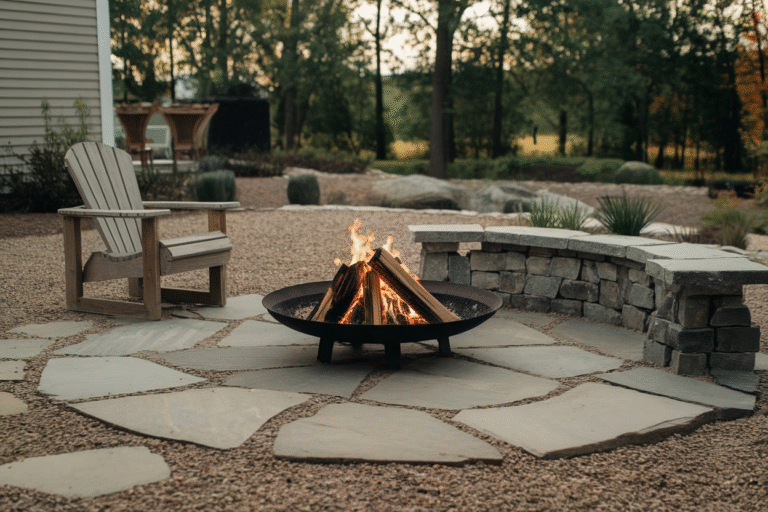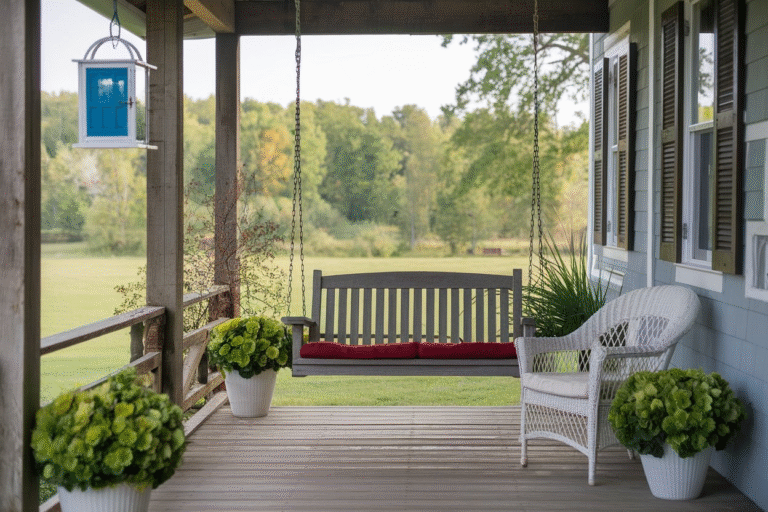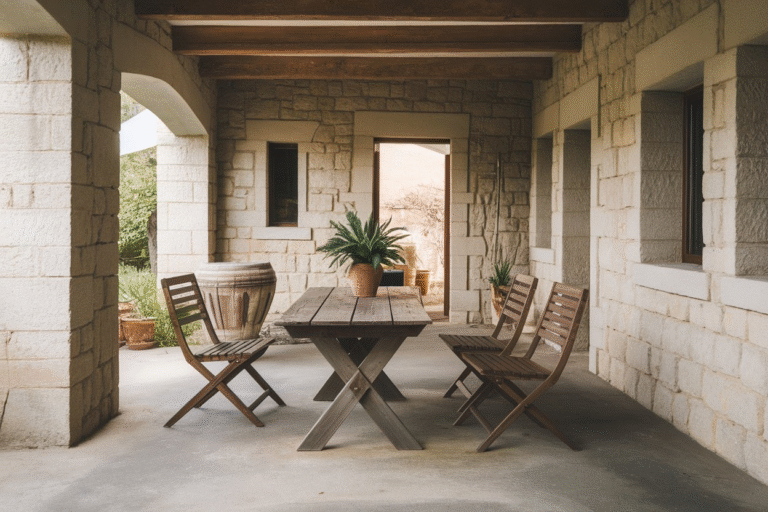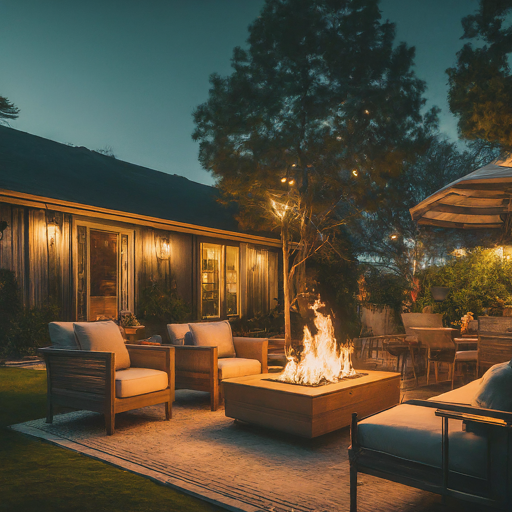21 Front Porch Planters Ideas

If your front porch is the smile of your home, then your planters are the twinkle in its eye. The right porch planters can take a ho-hum entrance and turn it into something that feels alive—literally.
Whether you’ve got a sprawling farmhouse porch or just a sliver of concrete to work with, planters are your secret weapon for curb appeal, personality, and charm.
I’ve helped friends, family, and even a skeptical neighbor or two turn bland porches into blooming works of art—sometimes with just a couple of planters and a bit of imagination.
1. Classic Terra Cotta Pots
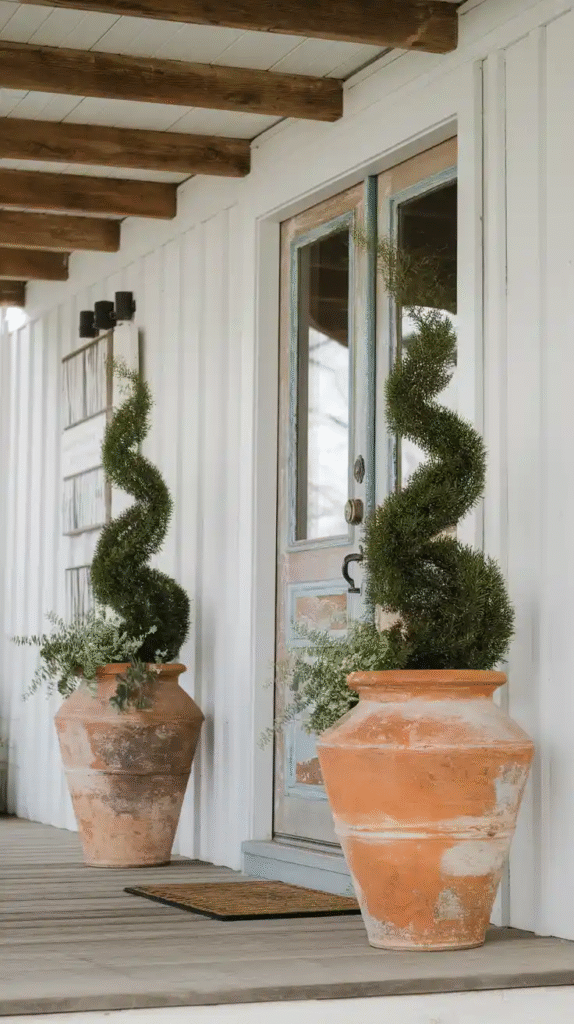
Simple, timeless, and versatile, terra cotta pots are the denim jeans of porch planting. They go with anything and look even better with age. They’re ideal for Mediterranean-style plants like rosemary, lavender, or even a small olive tree. Group them in odd numbers—think three or five—for a naturally pleasing arrangement that doesn’t feel forced.
2. Galvanized Metal Buckets
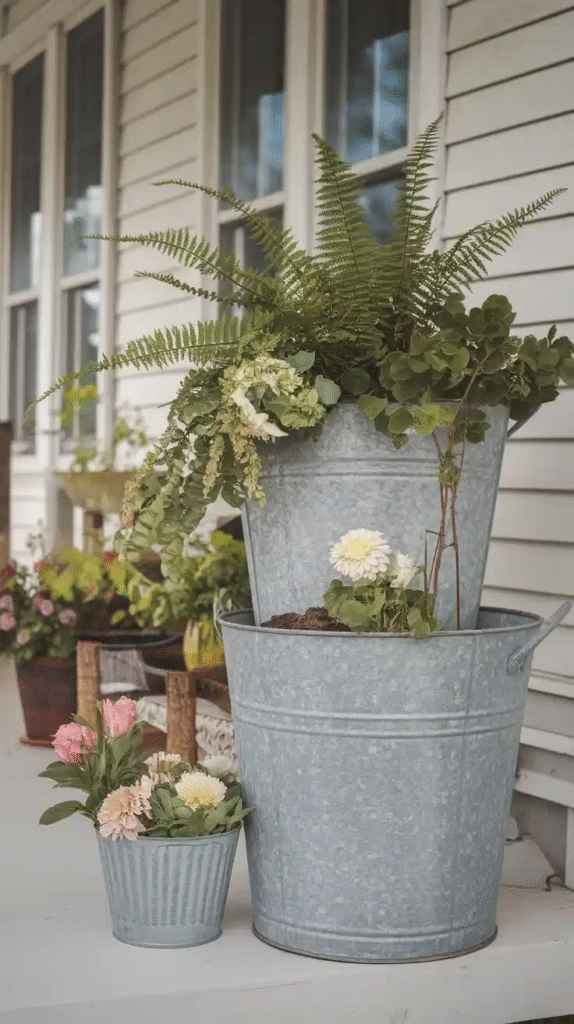
There’s something charmingly rustic about galvanized steel planters. Repurpose old pails or milk cans into eye-catching homes for petunias, marigolds, or ferns. Bonus: their silvery finish bounces light beautifully, which can add brightness even on cloudy days. A client of mine used her grandfather’s old feed buckets—filled them with cascading ivy—and the result was both sentimental and stunning.
3. Tiered Wooden Crates
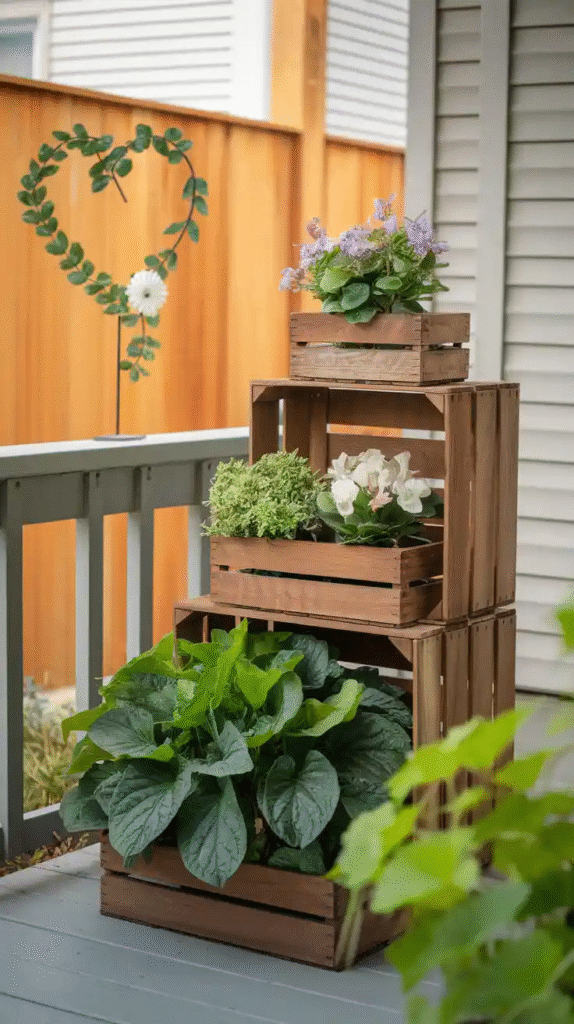
Wooden crates are your best friend if you want multi-level display without the clutter. Stack them like shelves or tilt them for a playful look. Paint them white for a clean farmhouse style or leave them raw and rustic. Fill each level with a mix of herbs, succulents, and flowering plants for depth and visual rhythm.
4. Hanging Planter Baskets
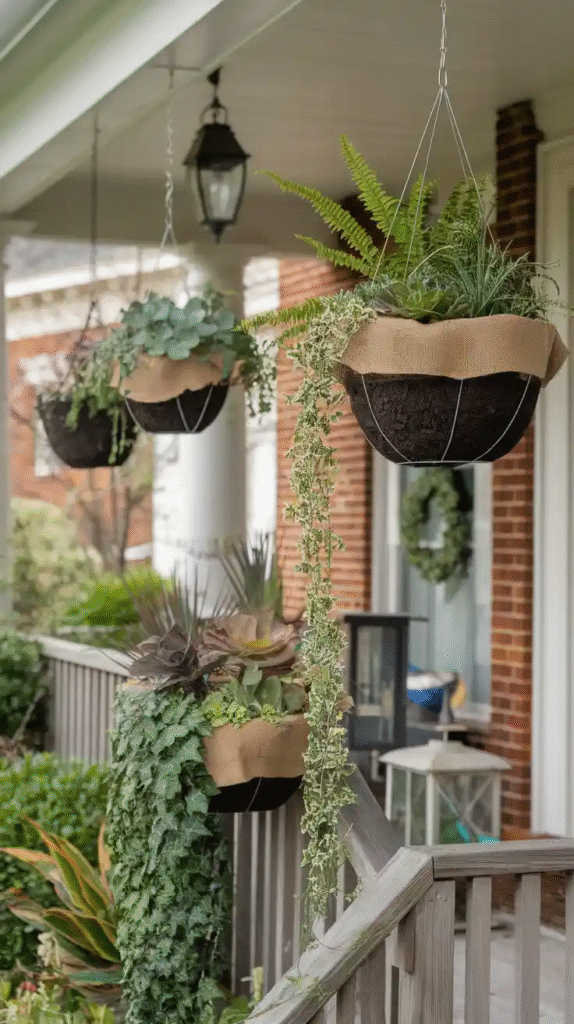
Sometimes, vertical space is all you have—and that’s where hanging baskets shine. Use sturdy hooks and chains to suspend baskets of trailing plants like sweet potato vine, ivy, or wave petunias. The visual movement creates a gentle sway in the breeze, making your porch feel like a living, breathing part of nature.
5. Tall Urn Planters
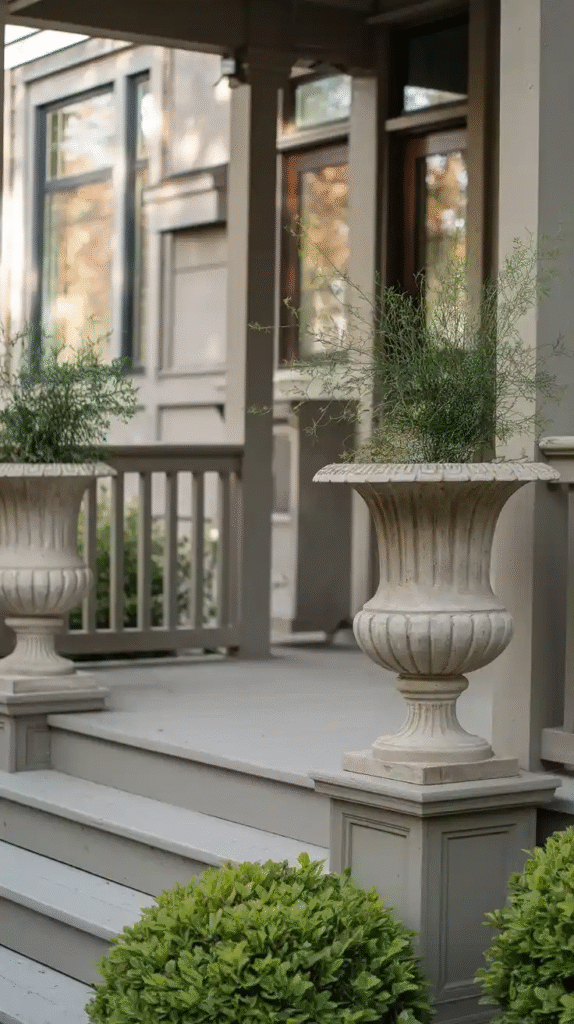
When you need drama, go for tall urns. These elegant planters—often in cast stone or resin—are great for framing your front door or lining the steps. Fill them with a “thriller, filler, spiller” combo: a tall focal plant (like a spike or grass), middle-range florals (like begonias), and a trailing vine for movement.
6. Recycled Barrel Planters
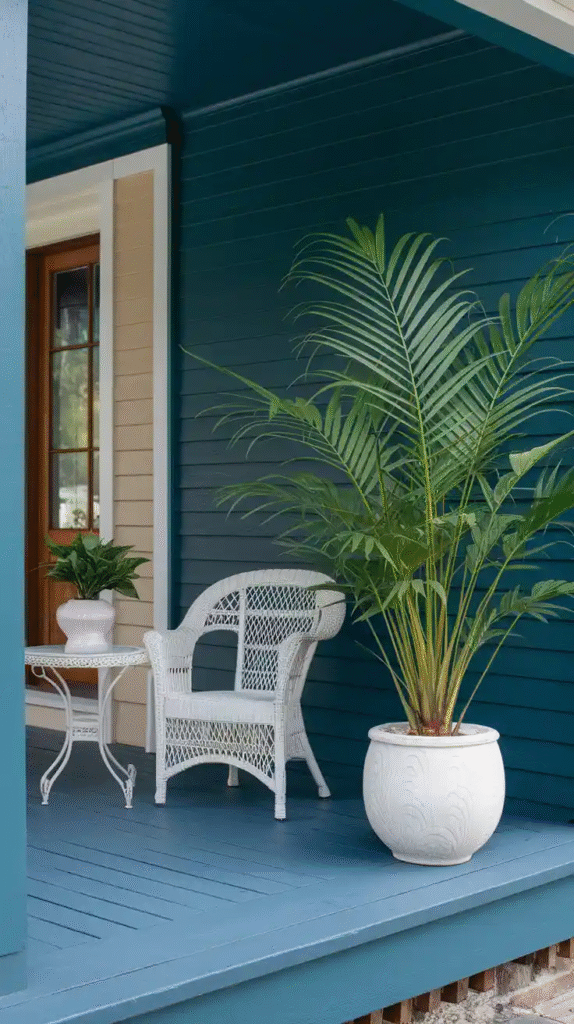
Half of an old whiskey or wine barrel can become a statement piece with deep planting space. They’re great for growing hydrangeas, boxwoods, or even small citrus trees if you’ve got the sun. One of my neighbors used a barrel from a local vineyard and planted dwarf sunflowers—it turned heads every time someone walked by.
7. Vintage Toolbox Planters
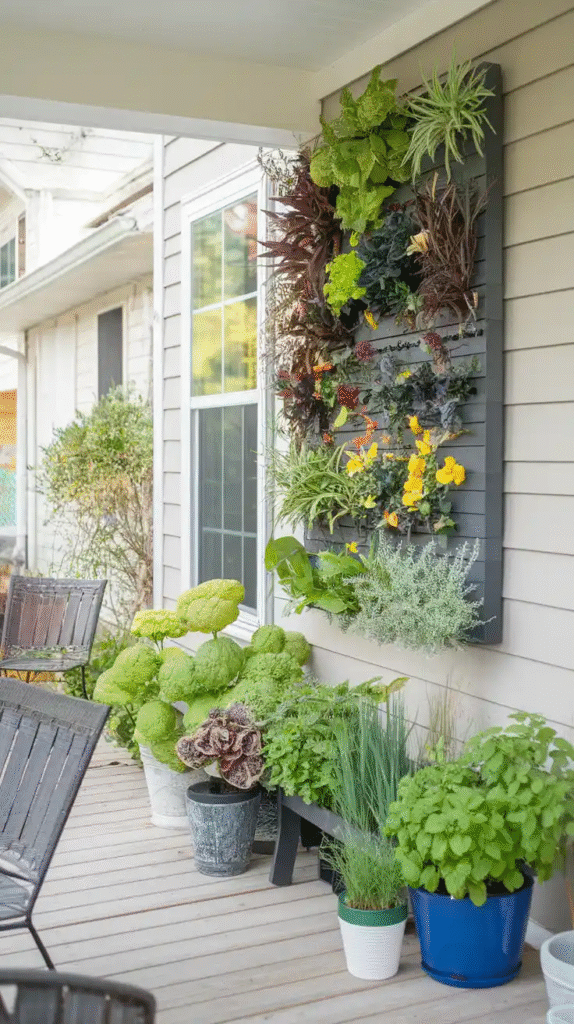
This one’s for the antique lovers: metal or wooden toolboxes make quirky, narrow planters for succulents, herbs, or mini annuals. Set one on a side table or bench. They’re conversation starters—and a beautiful blend of function and nostalgia.
8. Window Box Planters on Railings
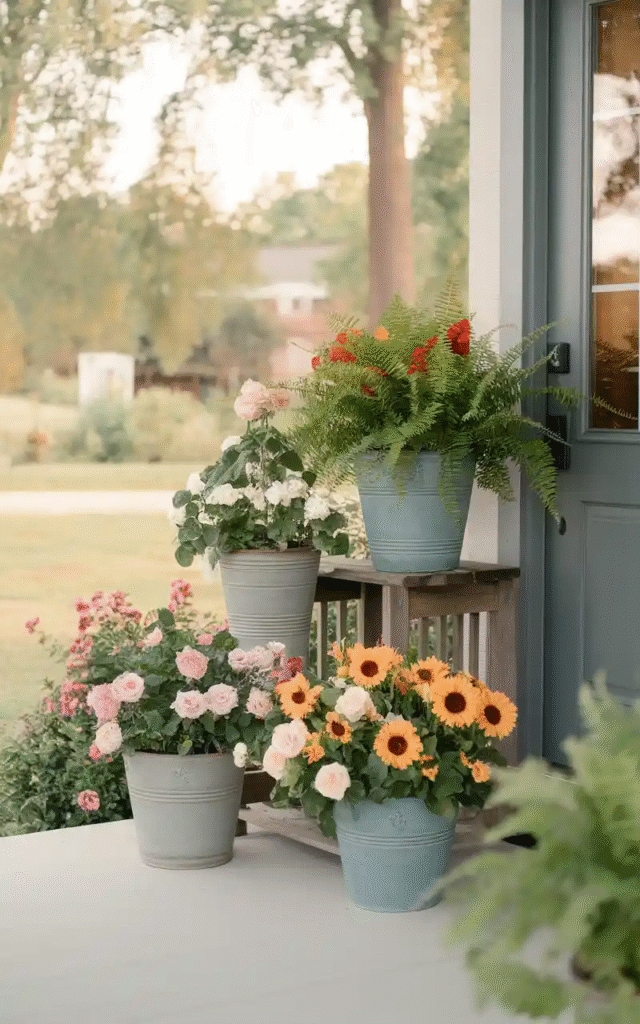
Window boxes aren’t just for windows. Attach them to porch railings or ledges for a cascading floral effect that’s impossible to ignore. Choose plants that spill over the sides like petunias, bacopa, or trailing lobelia. Alternate colors or stick to monochromatic tones for a sleek design.
9. Painted Clay Pots with Patterns
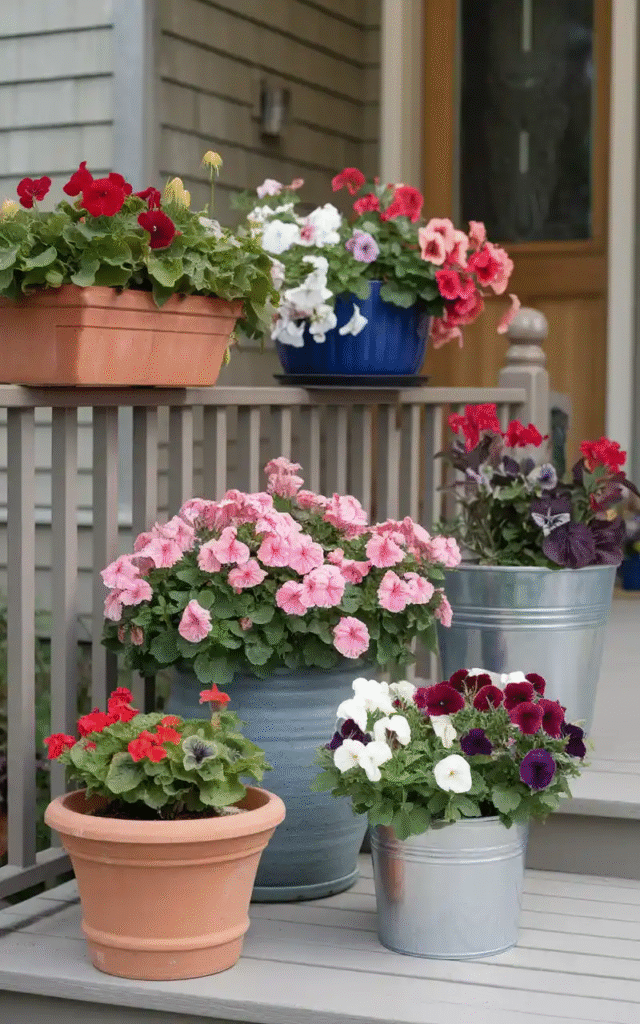
Give classic clay pots a facelift with DIY paint jobs. Use stencils, polka dots, stripes, or even hand lettering to personalize your planters. I once painted an entire set in black and white buffalo check for fall, and people assumed I bought them from a designer store. Nope—just patience and painter’s tape.
10. Matching Symmetrical Planters
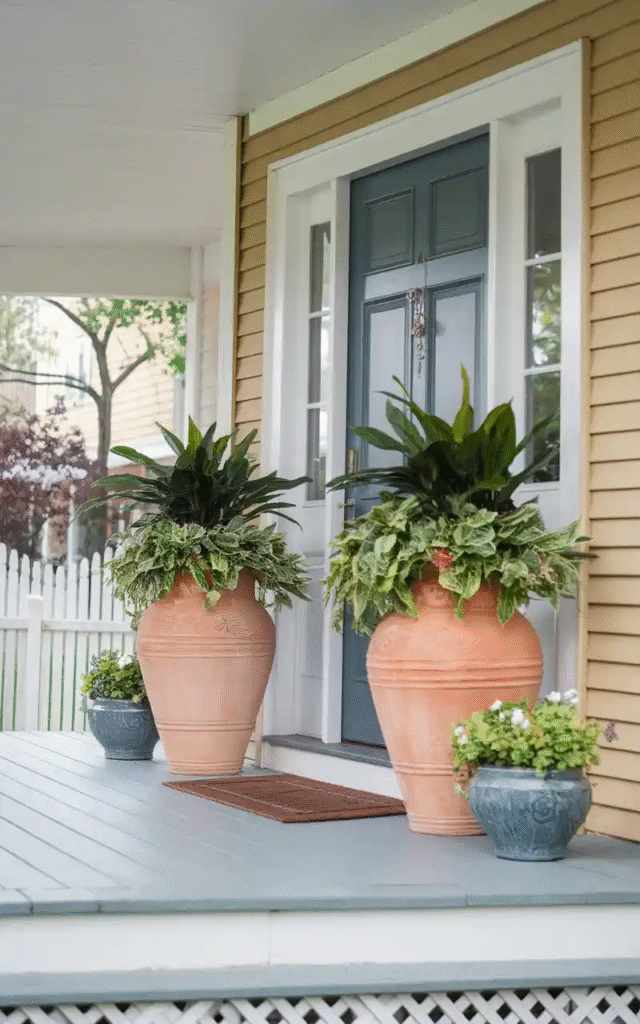
For a formal, welcoming look, place two identical planters on either side of your front door. Choose evergreens like dwarf cypress or spiral topiaries if you want year-round structure. Match the pots and the plants for that magazine-worthy symmetry that says “I’ve got my life together—even if I really don’t.”
11. Repurposed Furniture Planters
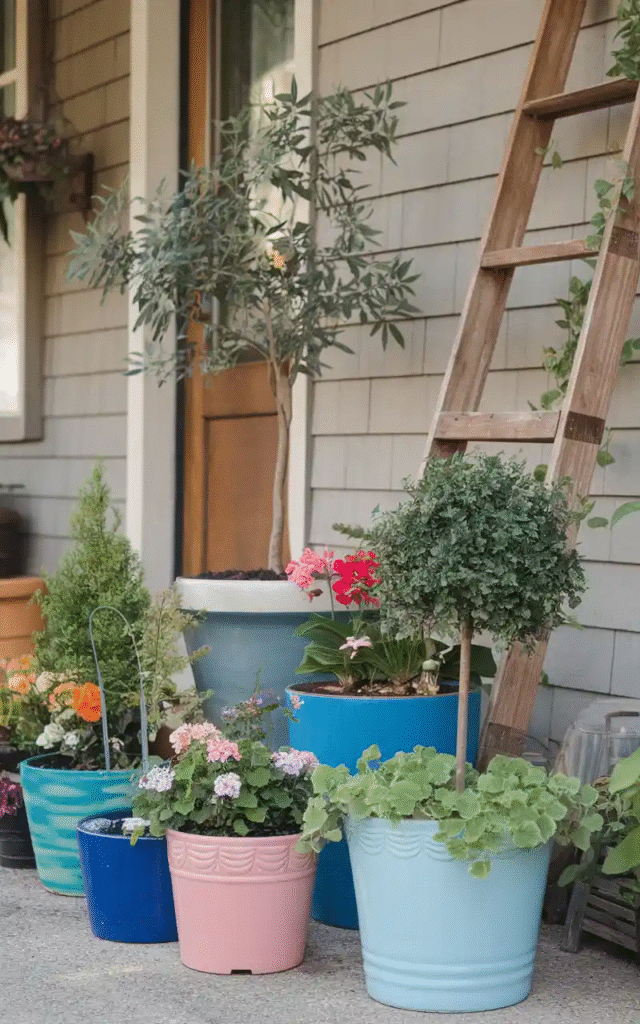
Take an old chair, remove the seat, and replace it with a liner and soil. Congratulations—you now have a statement piece planter. I once saw an entire row of mismatched chairs used this way on a vintage porch, each filled with something wildly different. It was strange, beautiful, and completely unforgettable.
12. Seasonal Switch-Outs
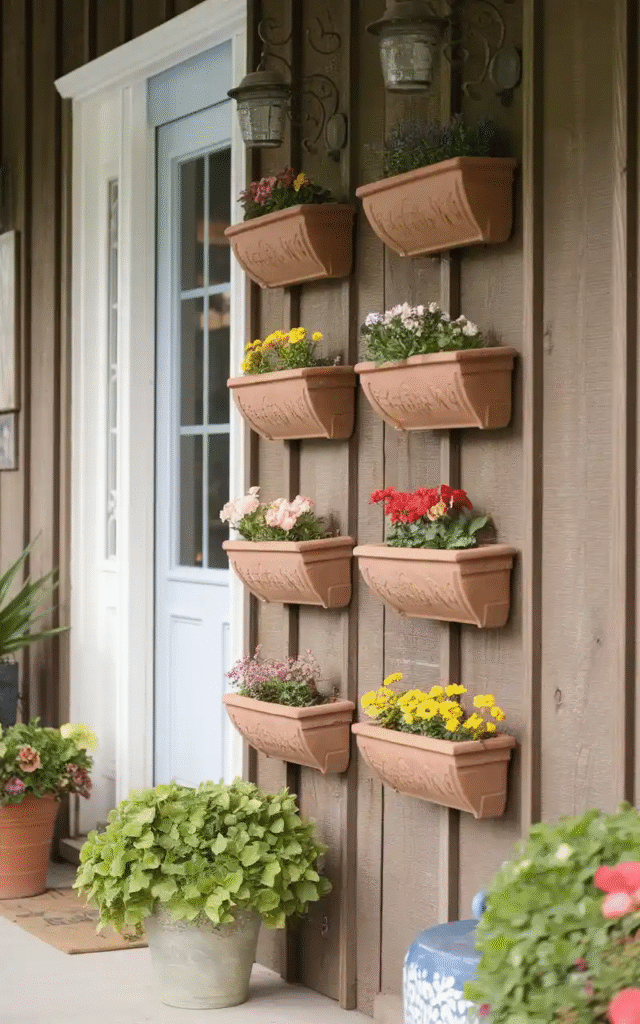
Use neutral pots and change the contents with the seasons. Spring? Pansies and tulips. Summer? Geraniums and petunias. Fall? Mums and ornamental kale. Winter? Evergreens and pinecones. Having one set of planters that evolve keeps things fresh without rethinking the whole setup.
13. Concrete Cube Planters
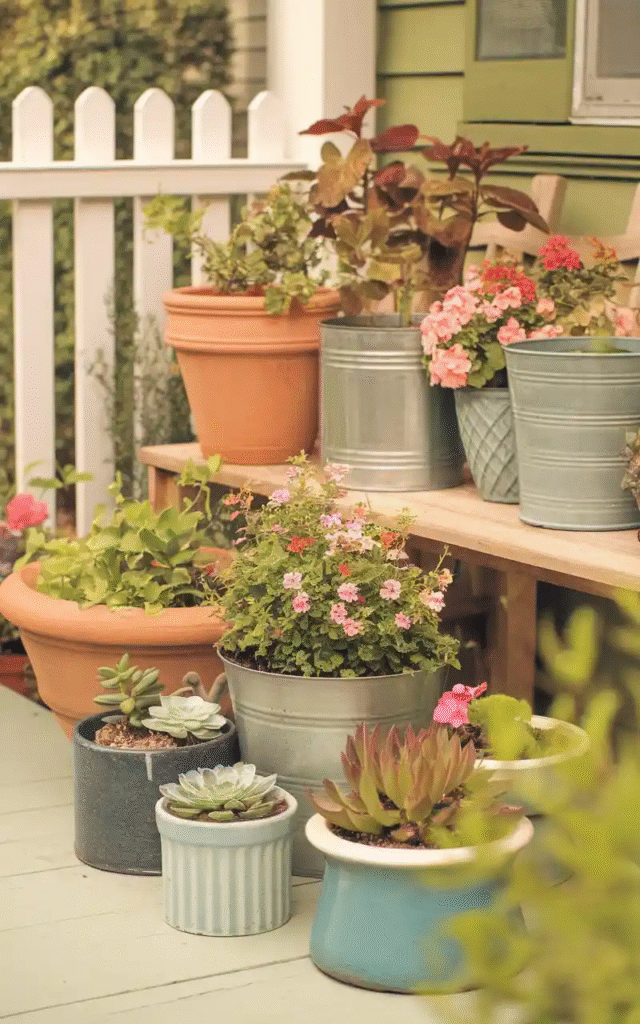
Modern farmhouse more your vibe? Use sleek concrete planters—either cube or cylinder shaped. They bring structure, neutrality, and heft. Fill them with grasses or monochromatic florals for an understated yet striking look. Just remember: concrete is heavy, so place them where you want them to stay.
14. Hanging Wall Pocket Planters
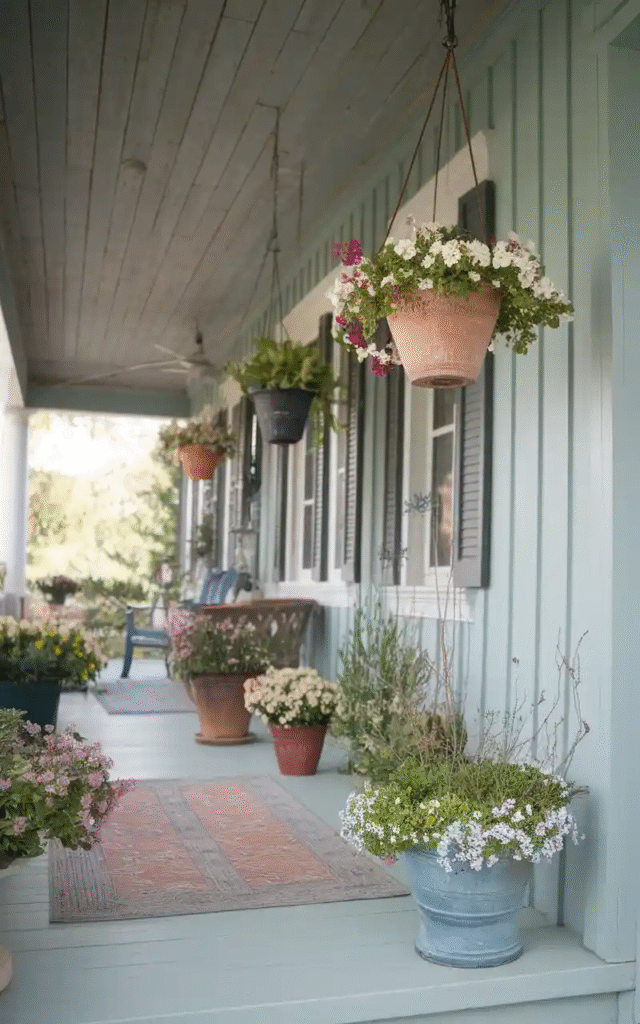
Use a vertical wall garden or pocket-style planter to make use of porch walls or columns. These are great for herbs, succulents, or ferns, and they add texture and life to an otherwise blank canvas. I installed a metal pocket panel next to a friend’s porch swing and filled it with trailing strawberries. Now, guests snack while they swing.
15. Black Iron Planters with Scrollwork
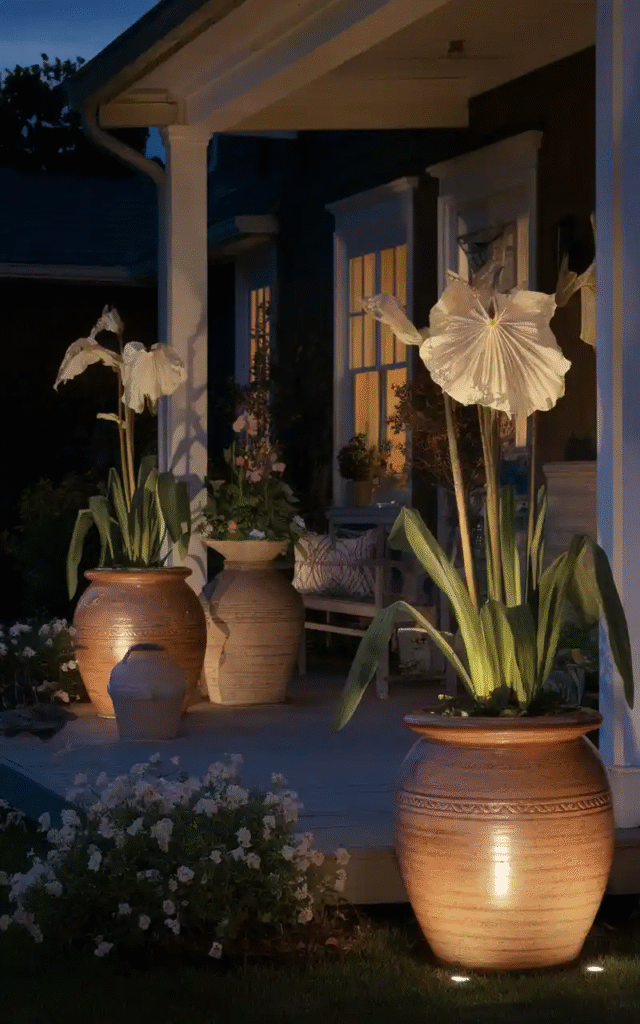
For a touch of vintage romance, go with black wrought iron planters. Their scrollwork design adds instant elegance and pairs well with flowering plants like petunias, verbena, or even English ivy. They look like something out of an old garden in France—and they age beautifully.
16. Rustic Baskets with Liners
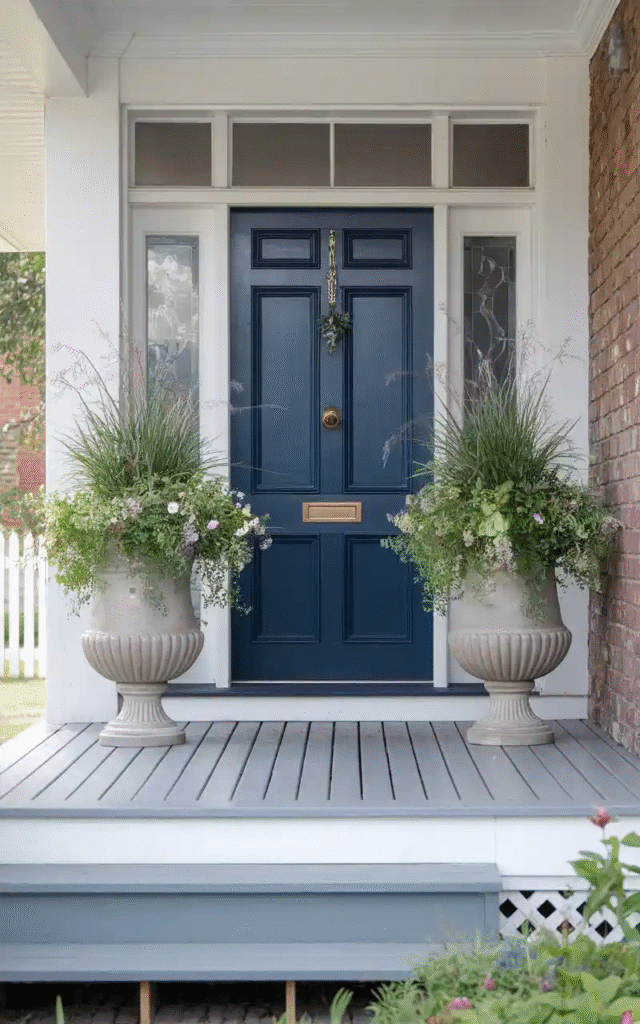
Baskets are cozy, humble, and wonderfully adaptable. Line them with coco liners or plastic inserts, and suddenly you’ve got portable, breathable planters. Group them in threes with varying heights for a layered effect. They soften hard lines and make any porch feel like home.
17. Upcycled Tire Planters
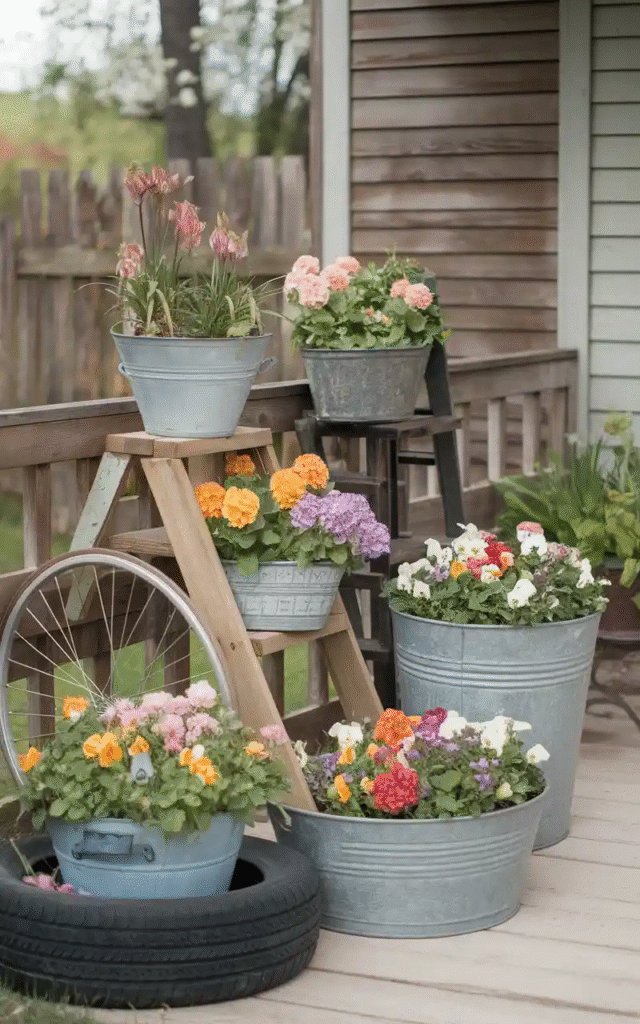
Hear me out. Spray-paint a used tire, add a base, and fill it with soil. You’ll have a bold, round planter that’s surprisingly fun and funky. Choose vibrant colors or muted farmhouse tones depending on your style. Not for everyone, but they make a serious impact.
18. Monogrammed Planters
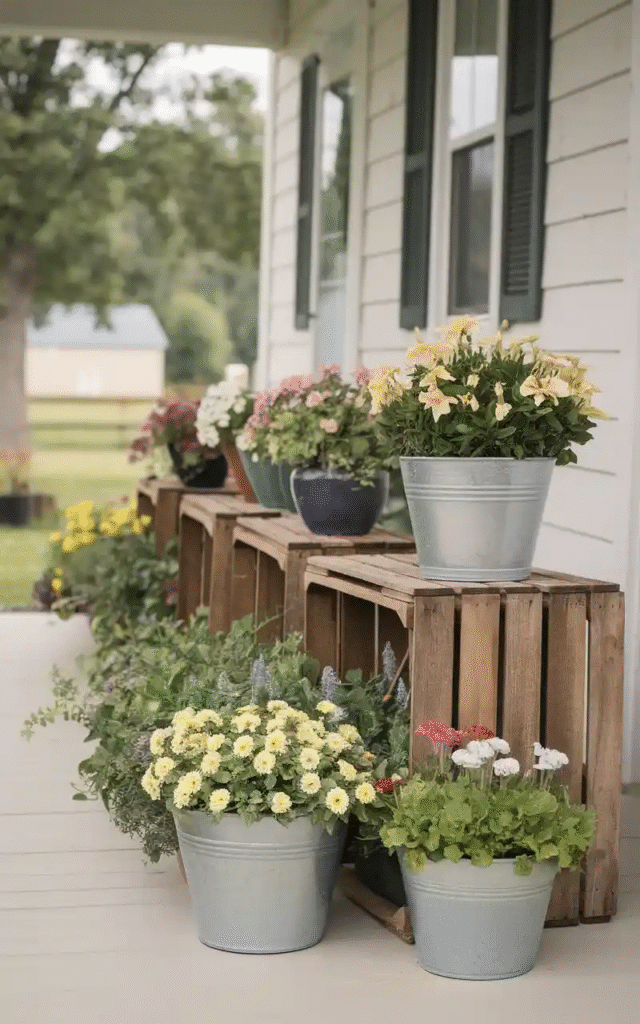
Add a personal touch with large letter planters—either wooden or metal. Spell out your family name or just use a giant single initial. Fill them with moss, ivy, or even faux plants if you want zero maintenance but full style points.
19. Herb Planters for Porch Steps
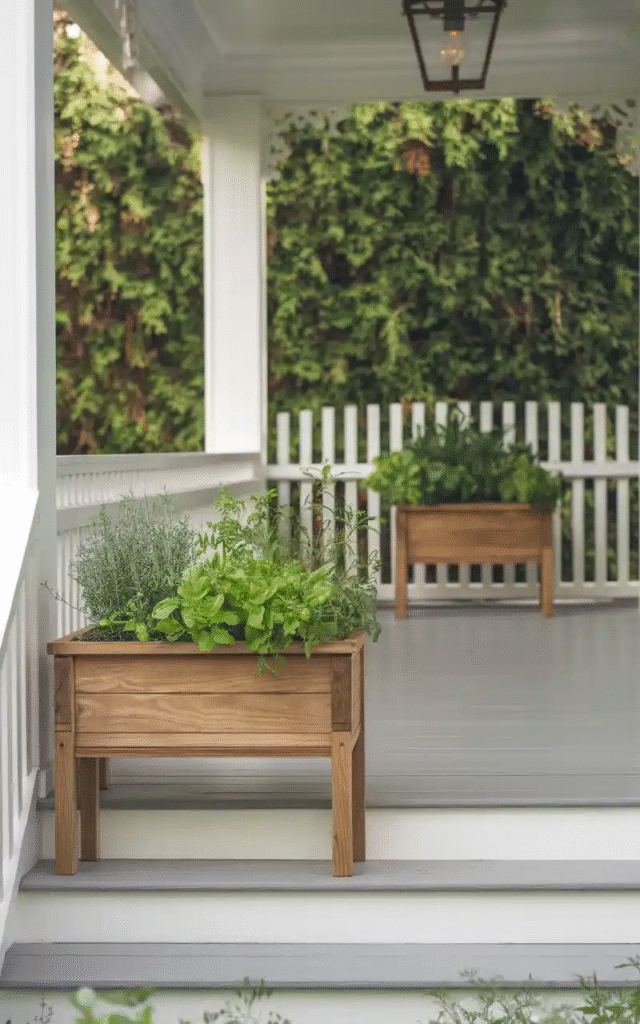
Line your steps with small herb planters—basil, thyme, sage, mint. Not only does it smell amazing when you brush past, but it also adds greenery at varying levels. Use matching pots or mismatched terra cotta ones for a more eclectic look. And yes, you’ll thank yourself when you need just a sprig while cooking.
20. Mini Tree Planters
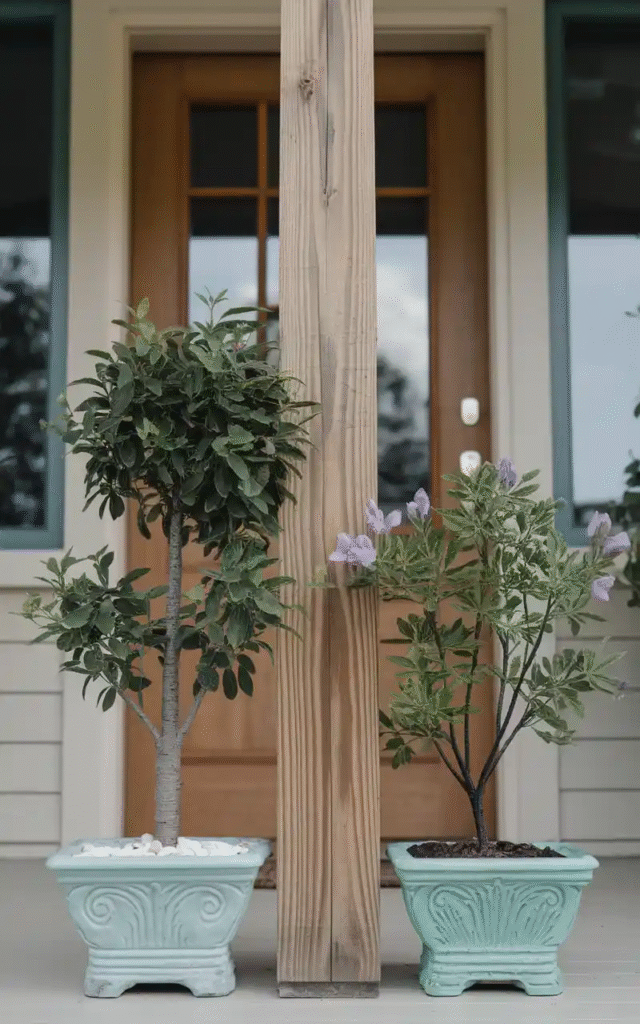
Add structure and elegance with dwarf trees or shrubs like boxwoods, miniature lemon trees, or olive trees in tall planters. They look regal, polished, and provide that eye-catching vertical line that balances out shorter florals. Go symmetrical or just place one strategically for impact.
21. Mixed Material Planters
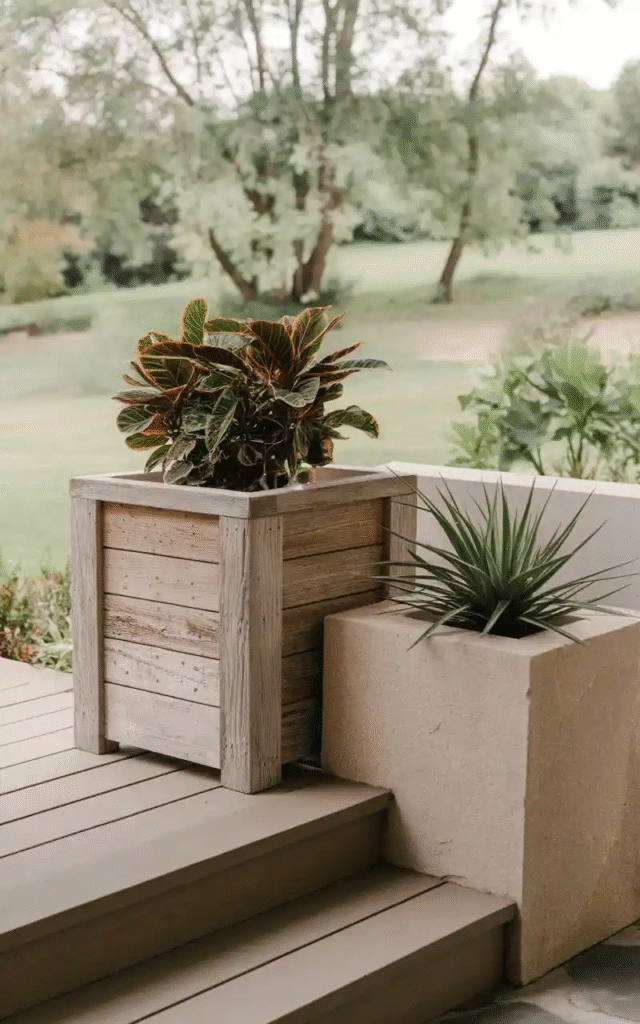
Combine materials like wood, metal, and ceramic across your planters to create a layered design story. Match your home’s tone: rustic farmhouse? Use distressed wood and iron. Modern farmhouse? Try concrete and black accents. Mixing textures draws the eye and makes the space feel intentional.
Tips for Choosing the Right Planter
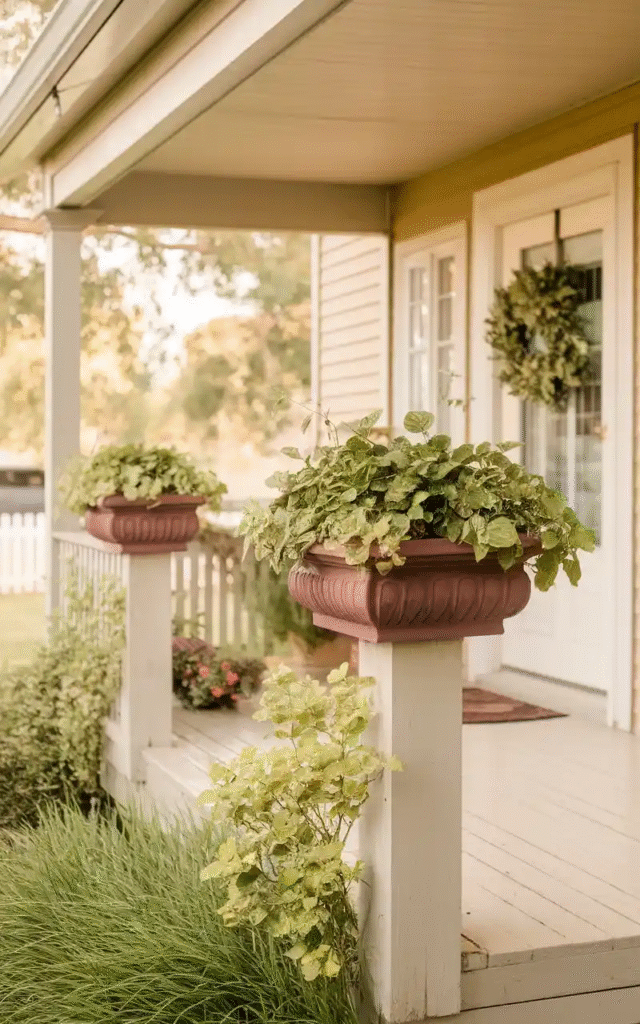
Choosing the right planter isn’t just about looks. Consider sunlight, drainage, weight, and space. If you’re renting or like to change things often, go lightweight and portable. If you want permanence, go heavy and weather-resistant. Most importantly, don’t buy for the plant you have—buy for the plant you want to thrive.
How to Arrange Planters Like a Pro
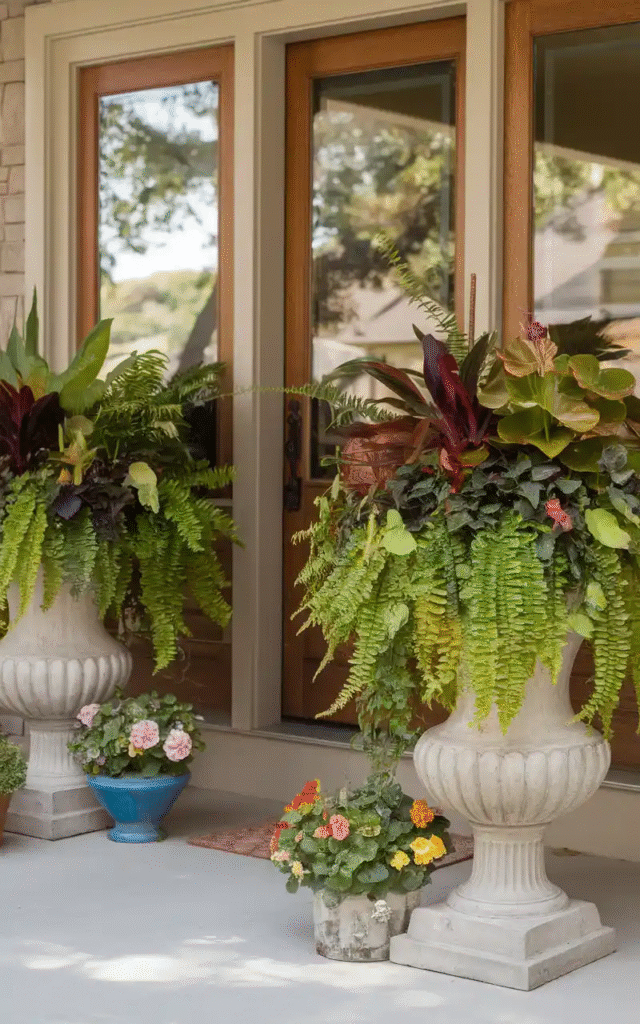
Here’s a secret: The best porch planters are arranged using the rule of threes. Group them in odd numbers. Mix heights and textures. Add something that climbs, something that spills, and something that fills. And above all, leave breathing room—don’t pack your porch like a plant thrift store.
Conclusion
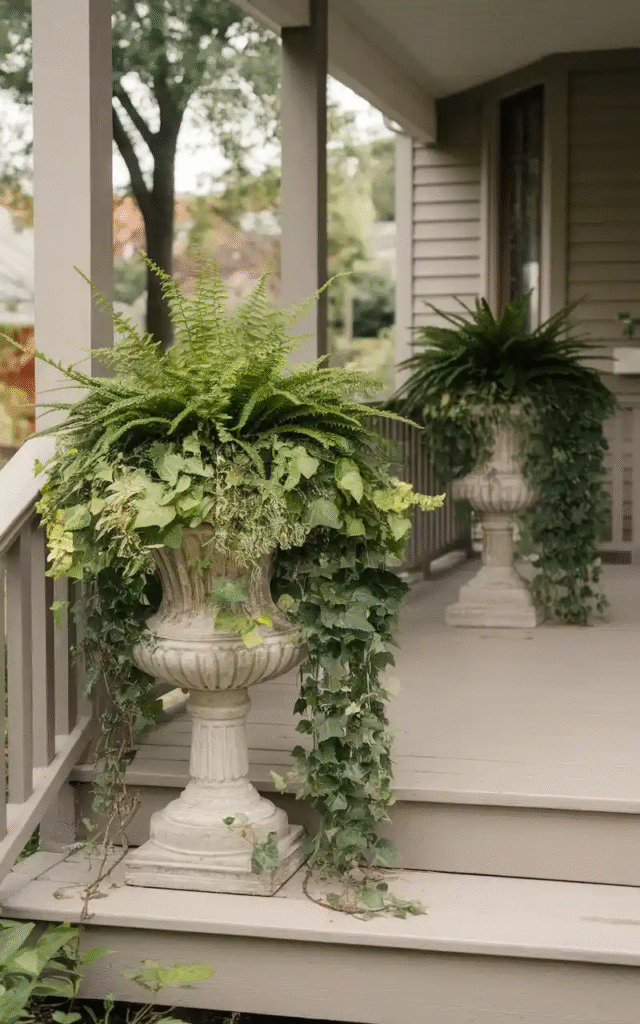
At the end of the day, your front porch should reflect you. Maybe you like clean symmetry and topiary trees. Maybe you’re a basket-and-wildflowers kind of soul. Either way, let your planters do the talking—they say, “Here’s someone who cares. Here’s someone who notices beauty. Here’s someone home.”
When I look at a porch and see thoughtfully arranged planters, I know the people inside probably have a favorite coffee mug, keep extra chairs for visitors, and say hello when you pass by. It’s a small thing that says a whole lot.

